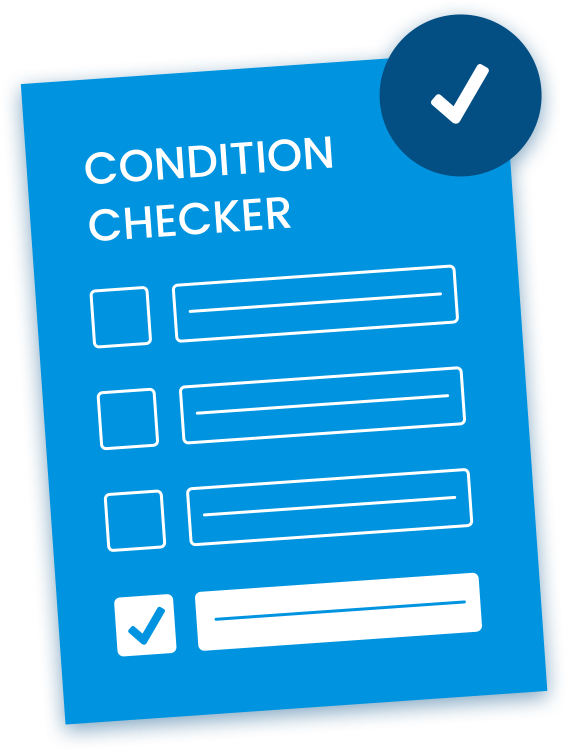Tennis Elbow
Find out which possible conditions you may be suffering from by trying our 2-min Guided Pain Assessment Form!





Tennis elbow, or lateral epicondylitis, occurs when the tendons that connect the humerus to the muscles of the forearm become inflamed or torn. Because playing tennis tends to cause this form of overuse injury, the condition was coined “tennis elbow” by Henry Morris in 1882. Although tennis elbow isn’t exclusive to tennis players, the name stuck. Now we use the term “tennis elbow” to describe inflammation of the extensor tendons that straighten out the elbow and wrist.
Your elbow is a hinge joint, created by the meeting up of 3 bones: your humerus (or upper arm), your radius (the thick forearm bone on the thumb side of your hand), and your ulna (the delicate forearm bone on your pinky side). The bottom-most part of your humerus contains bony landmarks, known as epicondyles. These bony knobs attach via tendons to muscles that flex or extend the elbow.
When the tendons that attach to the lateral epicondyle on the outside of your arm become irritated, tennis elbow can arise. Although there are many muscles in your forearm, the tendon that joins to the Extensor Carpi Radialis Brevis muscle (ECRB) is the most likely to be the culprit. In particular, this muscle serves to stabilize and extend the wrist. As such, tennis elbow can make it difficult to extend the wrist and fingers, shake hands, or form a fist. You may even notice a degradation in hand grip strength and struggle to grasp everyday objects.
You may also be wondering… Can the tendons that attach to the medial epicondyle on the inside of your arm also become strained? And, the answer is YES! When this occurs, the condition is actually known as golfer’s elbow. Because these tendons attach to muscles that flex the elbow, you’ll notice more pain while bending the arm, wrist, or fingers. The other symptoms, like a loss of hand strength, occur with both conditions.
The major cause of tennis elbow is overuse of the extensor muscles in the forearm. Although this affects athletes who play racquet sports, it also affects people who engage in a number of other occupations, such as:
…among many others. In essence, any repetitive activity that overloads the extensor tendons of the forearm can lead to this condition.
Although rare, trauma to the outside of the elbow can also cause tearing of the ECRB tendon, triggering the symptoms of tennis elbow. In addition, if you are between the ages of 30 and 50, you run a higher risk of developing tennis elbow than older or younger individuals.
Does this sound like you? If so, contact one of our board-certified elbow specialists today! Our orthopedic surgeons specialize in minimally invasive treatments for elbow pain!

Find your condition with our 2-minute Condition Checker.
Tennis elbow is just one form of elbow tendinopathy—a condition that affects the elbow’s network of supportive tendons. Other forms of tendinopathy include golfer’s elbow. Because the symptoms of these disorders can be similar, it is important to have your condition diagnosed by a doctor. Common symptoms of tennis elbow include:
If these symptoms sound like you, your doctor will need to perform a series of tests to screen for tennis elbow. Your doctor will review your occupational and medical history, as well as perform a physical exam of your elbow and wrist. For example, your doctor may have you extend your wrist against resistance to see if this motion enhances your pain.
If these tests are positive, your doctor may order imaging exams. These may include X-rays (to image the bony structures of your elbow) or MRIs (to view soft tissues, like tendons and muscles). In addition, your doctor may prescribe an EMG, or nerve conduction study, to ensure that you don’t have any pinched nerves in your arm or cervical spine.
Worried that you have tennis elbow? Receive a proper diagnosis today! Consult with our elbow specialists at NJ Spine & Ortho–and “Get Your Life Back!” from chronic pain.

Discover which treatment options are right for you with our Treatment Finder.
When it comes to tennis elbow, there is some good news: Between 85 – 95 % of patients will recover without the need for surgery. The key to managing your condition is devising a successful regimen of conservative treatments with your doctor. Common forms of nonsurgical treatment for tennis elbow include:
If you don’t find ample relief after 6 months of therapy, your doctor will likely advise you to try surgery. Surgery for tennis elbow often involves arthroscopy, a minimally invasive method in which your doctor uses live imaging to view and repair the structures of your elbow. To find out if you are a candidate for elbow arthroscopy, consult with our orthopedic specialists at NJ Spine & Ortho today! Our doctors are equipped and ready to help you “Get Your Life Back!” from elbow pain. For care that you can trust, contact our doctors today!

Determine your eligibility with our Candidacy Verification.
"*" indicates required fields
CONTACT
Phone: 855.586.2615
Current Clients: 855.706.1011
NJ Spine and Orthopedic is dedicated to delivering minimally invasive laser spine surgeries to eliminate the pain, discomfort, and dysfunction of numerous conditions of the neck and back.
OVERVIEW
LOCATIONS
Copyright © 2025 NJ Spine & Orthopedic